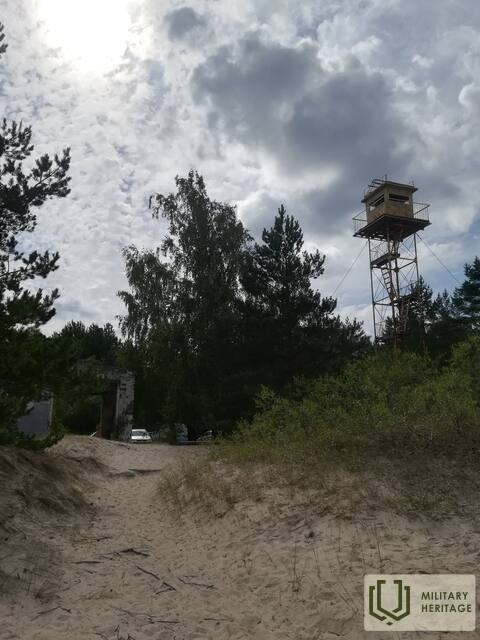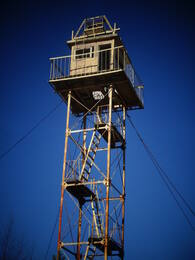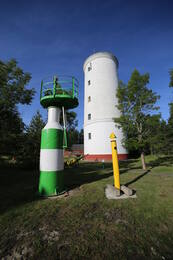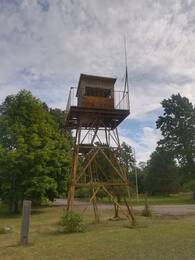Piirirežiimi ala
Umbes aegadel piirirežiimi alal.
Esimesel hetkel, kui hakkasin tööle Slītere riiklikus reservis, ei teadnud ma tegelikult veel piiriprotseduuri. Ühel õhtul sõitsin viimase bussiga Mazirbesse, kus meid peatasid piirivalvurid. Üks neist vaatas mu passi ja teatas, et elan Slitteris, mitte Mazirbes. Aga ma küsisin temalt "A pečatj tam estj" (Aga kas tempel on seal (passis)?). Ta loobus käest, kuid lasi mind Mazirbesse.
Minu abikaasa (kes töötas sel ajal Ezeri metsanduses) omakorda rääkis mulle juhtumist, et ühel suvel otsustas ta minna Melnsilast ranna äärde Kolkasse. Ta tegi seda seni, kuni kuulis "Stoj, ruki verh!" (Seisa, käed õhus!). Ta kõndis kätega mitu kilomeetrit Ushi poole, kus tema isik leiti varda pistikupesast (sel ajal olid kaasaskantavad telefonid ja teatud ühenduspunktid, kust temaga ühendust võeti). Pärast seda vallandati ta.
Ushal oli sel ajal mobiilne raketibaas. Kaevikud ja süvendid on säilinud tänapäevani. Rannikutee ehitati ka strateegilise objektina. Selle küljele maeti räpparid (kohad veel säilinud), et oleks võimalik täpsed koordinaadid kindlaks teha.
Seotud objektid
Mazirbe piirivalve vaatlustorn
Nõukogude piirivalvekordon asus endise merekooli hoones. Selle kõrval asus piirivalve vaatlustorn, mis on hästi säilinud. Teine vaatlustorn asub merekaldal parkla juures. Vaatlustornid tuletavad meelde Nõukogude okupatsiooni aega, kui Mazirbe oli suletud piiritsoon ja tsiviilisikud tohtisid mere äärde minna vaid valgel ajal selleks ettenähtud kohtades. Piirivalve vaatlustorn on üks paremini säilinud sedasorti objekte Läti rannikul. Sinna ronimine on ohtlik.
Oviši tuletorn ja rannavalve
Oviši tuletorn asub Kuramaa rannikul Tārgale vallas Oviši külas ja on vanim tuletorn Lätis (ehitatud 1814. aastal). Oviši tuletorn on 37 m kõrge. Tuletorni konstruktsioon on kahesilindriline: selle läbimõõt on 11,5 m ning kiviseina sees on teine torn, mille läbimõõt on 3,5 m. Selliseid kahesilindrilisi tuletorne kasutati 18.–19. sajandil Euroopas ka kaitserajatistena vaenlase rünnaku vastu. Oviši tuletornimuuseumi majakavarustuse ja navigatsiooniseadmete kollektsiooni peetakse Läti majakamuuseumite kogude seast suurimaks. Sobiva ilma korral võib Oviši tuletornist näha Irbe majakat.
Teise maailmasõja lõpus paiknes Oviši tuletorni lähedal Saksa sõjaväe pataljonistaap ja 530. mereväe suurtükidiviisi 4. patarei ühes mitme õhutõrjesuurtükiga. Võimalik, et tuletorni jalamil asus raadiolokatsiooni ja infrapunakiirguse avastamise seade Donau Gerät. Hiljem asus tuletorni lähedal Nõukogude piirivalvekordon, kuid ükski nõukogudeaegne hoone ei ole tänaseni säilinud. Tuletorni territooriumil asub endiselt Oviši jaamahoone.
Pāvilosta Koduloomuuseumi püsinäitus
Pāvilosta Koduloomuuseumis võib vaadata näitust „Pāvilosta, suletud ala”, mis räägib elust Pāvilostas Nõukogude okupatsiooni aastatel: täitevvõimust, piiritsoonist, kalurikolhoosist, kultuurielust ja olmest. Lisaks püsiekspositsioonile on välja pandud interaktiivne tundeküllane diginäitus kahes keeles ning audiovisuaalne installatsioon filmiga Pāvilostast.
Lisaks on muuseumis välja pandud uus näitus „Pāvilosta kuldsed liivaterad”. Digitaalne väljapanek tutvustab ammuseid sündmusi, Pāvilosta kujunemist ja tähtsamaid arenguid alates 1918. aastast tänapäevani. Militaarpärandit puudutatakse vabadusvõitlejatest rääkivas Läti Vabadussõja sektsioonis ja Nõukogude okupatsiooni sektsioonis.
Mazirbe merekool
Selles kompleksis asuv nõukogude piirivalve torn on üks paremini säilinud Läti rannikul. Kahjuks on hoonete seisukord kehv, kohapeal on püsside laadimis- ja mahalaadimispaik, samuti on päästetud sõiduauto ja kraavide fragmente.
Rannakaitsepost asus endises merekooli hoones. Nõukogude ajajärgul pakuti osades hoonetes majutust.
Nõukogude piirivalve teine torn asub umbes 400 m kaugusel rannast, kuid kahjuks on see lagunenud. Mazirbe paadikalmistu asub aga rannatornist mitte rohkem kui 500 m kaugusel Sīkragsi suunas.
Mazirbe paadi kalmistu
Mazirbe, mis on ajalooliselt tuntud kui suurim Liivi keskus, on märkimisväärne Läti ranniku ainsa kalurite kalmistu poolest. See ehitati 1960. aastatel, viimased paadid toodi sinna 1976. aastal. Paadid sattusid siia nii püügipiirangute kui ka vanuse tõttu.
Tänapäeval on Mazirbes vähem kui kümme kalapaadi vrakki, kuid ajalooliselt on neid olnud palju rohkem. Paadid on maha pandud ka teistes mereäärsetes külades, kuid Mazirbe paadihauaplatsil on see tänapäeval kõige ilmsem.
Mazirbe paadikalmistu on ainus omataoline Läti rannikul.










